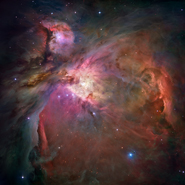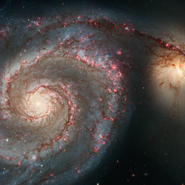Did You Know: Advancements in Space-based Astronomy
Video Player
Video Versions
Did you know astronomy and space telescope technology advance together?
Learn more about some of the milestones and technological advancements mentioned:
Learn more about some of the milestones and technological advancements mentioned:
Produced by the Space Telescope Science Institute’s Office of Public Outreach in collaboration with NASA’s Universe of Learning partners: Caltech/IPAC, Center for Astrophysics | Harvard & Smithsonian, and NASA Jet Propulsion Laboratory.
Video imagery:
- Animation of the Hubble Space Telescope orbiting around Earth: NASA
- Illustration of the Spitzer Space Telescope: STScI
- Spectrum of exoplanet WASP-96 b’s atmosphere: NASA, ESA, CSA, STScI
- Animation of coronagraph: NASA’s Goddard Space Flight Center
- Photo of detector cover being installed on the Nancy Grace Roman Space Telescope: NASA, Chris Gunn
Music from Music for Non-Profits
(SPEECH)
[RELAXING MUSIC]
(DESCRIPTION)
Did You Know? Advancements in Space-Based Astronomy. Animation of the Hubble Space Telescope orbiting around Earth, Image Credit: NASA. Text, Astronomy and space telescope technology advance together. Since 1990, Hubble has expanded our astronomy knowledge, including directly detecting the first exoplanet atmosphere. This raised new questions about exoplanets, requiring observations with novel technology. Illustration of the Spitzer Space Telescope. It points at a small dark exoplanet with a blue ring around it, and a bright orange star behind it. Text, With Spitzer's infrared capabilities, scientists directly identified molecules in exoplanets' atmospheres for the first time. This raised more questions about the detailed makeup of exoplanets, shaping telescope technologies to help search for potential clues of life. Webb's large primary mirror and high-resolution spectrograph were built, in part, to answer these questions. It allows us to study exoplanets' atmospheres in greater detail and in a wide range of wavelengths, aiding the search for signs of life. An exoplanet atmosphere spectrum. Text, Roman's coronagraph instrument will block starlight at an unprecedented level to detect even more exoplanets. This groundbreaking technology will influence the future Habitable Worlds Observatory, which will study Earth-like exoplanets. Looking further into the future, how will new insights influence astronomy research priorities and shape the design of space-based telescopes?


